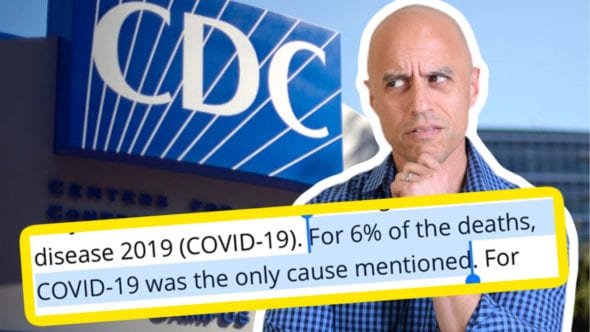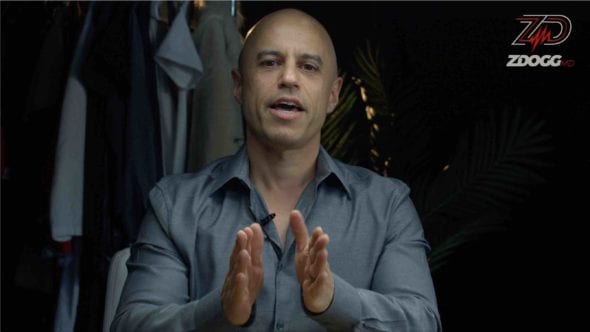Cannabis is supposed to IMPROVE nausea and vomiting, right? But what happens when it does the OPPOSITE?
In this continuing education episode, we discuss Cannabis Hyperemesis Syndrome (or “Cannabinoid Hyperemesis Syndrome” if you’re nasty). We carefully distinguish it from Cyclic Vomiting Syndrome and other causes of intermittent vomiting. An important episode for a clinical problem we are increasingly seeing in our emergency departments! Here’s the article I reference in the talk.
Facebook supporters and Patreon supporters can use THIS LINK to take a post test and claim Continuing Education credits for learning about home birth! Instructions for how to register and the password to access each CME episode will be found for supporters only in a post on Facebook (HERE) and Patreon (HERE). Docs, NPs, PAs, and all nurses, as well as anyone whose board accepts ACCME or ANCC accredited units can claim credit! Big thanks to our partners Physician’s Weekly for making this happen! #CME #CEU
FULL TRANSCRIPT BELOW.
Check out the original Facebook video here and leave your thoughts and comments. If you’re running short on bandwidth and phone battery life, you can listen to the optimized audio-only podcast version here on iTunes and Soundcloud. Please subscribe and leave a review, it helps us a lot! The podcast is now available on Spotify as well, spread the word!
What is up ZPac it’s your boy ZDoggMD. So if you are a supporter of the show for the $4.99, you will get continuing education credit for this year show. And today, and the way you’ll get the instructions for that is I will put a supporter post and in zdoggmd.com you will be able to click links if you’re a supporter and get the password and the instructions on how to log in to Physician’s Weekly website, they are our partners and they are dope. To go ahead and take a post-test and do an evaluation so you can get credit for this year show.
What is today’s show about? Cannabis hyperanum, hyper… Cannabis Hyperemesis Syndrome, it’s a mouthful okay. We’re gonna say CHS and actually the technical term is Cannabinoid Hyperemesis Syndrome, what is it? It is the pukey pukes that are actually caused by cannabis use. So you’re thinking, wait what? Isn’t marijuana, which is now legal in many states, either medicinally or recreationally. Right here in Nevada it’s legal. Isn’t it supposed to decrease nausea? Well if you saw our show on the proven medical uses of marijuana they include nausea due to chemotherapy. Pain, typically chronic pain due to neuropathy and things like that. And certain types of seizure disorders in children. Those are the sort of very well studied proven medical uses.
Now there are other things that are hinted at and people can make arguments for but those are the big proven uses. So why would it be that marijuana use might cause vomiting? Now I wanna preface this by saying we did a show on this before, but it was a live show and Tom and Logan were in it and we were talking hella smack and it was a little disjointed. And there are a few things that I think we could do better. Number one is make it concise, number two give you CE Credit and number three really focus on a particular distinction that I did not clearly make in that episode and has been pointed out to me by the cyclic vomiting syndrome community.
So there is another syndrome called cyclic vomiting syndrome which can look a lot like cannabis hyperemesis, but is different. So we’re gonna talk about some distinctions between the two so that they aren’t confused. Because honestly both syndromes are poorly understood, but CVS patients suffer a lot of stigma in emergency departments when it’s presumed that they’re just smoking a lot of weed and vomiting everywhere when in fact the etiology and the treatment is very different.
All right that being said I’m gonna review a paper with you that I will link to in the show notes that is called cannabinoid hyperemesis syndrome and it’s in the Journal of Drug Abuse or some crap, which I think is a terrible name for a journal. Because there’s use and abuse and in this case it’s unclear what’s going on. But it’s a review by Galli et al from 2011. I think it really kind of covers most of the big points. So here’s the overview then what I want you to be able to get out of this when you watch it. Recognize the fact that there is a syndrome in heavy cannabis users. And we’re talking about smoking a few times a day for years. That’s the average person who suffers from this syndrome that can lead to episodes of severe vomiting that nothing seems to make better except for scalding hot baths and showers. Which is one of the little telltale signs apart from the heavy cannabis use. And that it gets better and is cured by the cessation of using cannabis. And so those are the main things I want you to get out of this.
You can recognize this as we’re increasingly seeing legalization efforts, which I actually support, around the country for cannabis and studying the medical uses and those kind of things. We’re gonna have to deal with the side effects and the downsides. And nobody really quite understands how prevalent this is. The first descriptions of it started in 2004, and they were noticing in some studies in Australia which had a pretty permissive sort of heavy cannabis culture in southern Australia that people were presenting the emergency departments with the syndrome of cyclic vomiting. So you would have periods where you’re fine, periods only when you’re vomiting, periods when you’re fine again, periods when you’re recovering. And they were taking these hot baths, it was this learned behavior that was making it better. And heavy cannabis users, and they started describing this cannabinoid hyperemesis syndrome.
So let’s go through it and see what we can learn, because it’s important because it is the cause of a lot of suffering you guys. So these patients are really suffering and it’s compounded by the fact that they are often in terrific denial that their cannabis use is the cause of this. So what people will notice in the emergency department what I’ve noticed in patients is that when you tell them, well this is maybe cannabinoid hyperemesis syndrome my pronunciation is, I must be high it’s a legal state. Cannabinoid hyperemesis syndrome they get very upset, they’ll say it cannot be my weed. I smoke weed because I’m nauseous.
And this is where that distinction with cyclic vomiting syndrome becomes important because it turns out a lot of patients with cyclic vomiting syndrome who are suffering from intermittent bouts of nausea and vomiting, are also smoking weed up to 50% to try to relieve their symptoms. And so there can be a lot of diagnostic confusion. Because there’s so much denial, there’s a lot of suffering and it’s hard to treat because patients don’t accept the diagnosis. Sometimes it takes multiple visits before you’re gonna convince them that a trial of stopping cannabis is the answer and it’s not gonna make them worse. Okay so let’s go through this. So we talked about the fact that cannabis is really, it’s one of the most commonly used so-called illicit drugs although it’s becoming increasingly licit through legalization efforts, which I honestly think are very, very important. The drug war has failed. Stigmatizing and illegalizing use of natural plant makes very little sense.
But not studying it not understanding its downsides is also not good. So we need to think about that particularly as healthcare providers but also as potential users of this recreational and the therapeutic drug like any drug. And so about 4% prevalence of marijuana use in the US. And now we’re looking at it since 2004 this new syndrome of like this hypersyndrome What does it look like? Well basically first of all let’s back up a second, how does marijuana even work? How does it affect the brain? Well there are thousands of compounds in the natural marijuana plant whether you smoke it or vape it or it’s in a blunt or a joint or whether you’re eating it as an edible, there are different ways to consume it or whether it’s the pharmaceutical derivative like Dronabinol or Nabilone.
It works on the body in some, there’s some commonalities, and there are these cannabinoid receptors, two different types, CB1 CB2 in human and animals. They’ve identified these and they have different functions. They exist in the brain like the cerebral cortex the hypothalamus, hippocampus, memory, cerebellum balance, basal ganglia, different autonomic functions. So sometimes people get a tachycardia that is a kind of generally benign tachycardia from marijuana ingestion. But there are also cannabinoid receptors in the gut, in the GI system. And this becomes important to this particular topic. So CB1 receptors are in the intrinsic and extrinsic neurons in the enteric nervous system, the gut nervous system and there’s some thought that they have particular effects including slowing gastric motility. So what does that mean, it means that instead of peristalsis occurring at a certain rate it occurs at a slower rate, why is this important?
Because typically that is associated with nausea and yet cannabis in most people has an antiemetic and antinausea effect, why? Because of the central CB receptors. So those are felt to mediate a kind of antinausea effect centrally in the brain. So these two effects on balance favor anti-nausea. In normal you know users who aren’t using all the time and maybe don’t have a predisposition to have this syndrome. Now how are the compounds there are the cannabinoids, CBD, CBG. There are different psychoactive forms of THC, tetrahydrocannabinoid. THC all right delta-9 being the most commonly known. But there are multiple sub metabolites, it’s processed in the liver through the p450 system. So there’s a lot going on that we can’t entirely nail down what’s causing what in any given situation. And so what we do know is that the psychoactive component that gives you the high is typically the THC side. Whereas the CBD side has other effects that aren’t necessarily psychoactive. We’re not entirely sure what effect is causing the hyperemesis syndrome.
So that being said understanding the basic physiology helps us to understand how could this actually cause vomiting? Well there is an effect on the gut, the other theory is that there’s some central effect on the hypothalamus that may lead to nausea. Now it helps us to know how is THC and the active compounds in marijuana and cannabis how are they cleared from the body. Well they’re, it turns out THC is actually stored in fat. So the more you smoke the more you end up storing this THC in your fat stores, and over time and with exercise with fasting you can actually release THC and get a psychoactive effect or another physiologic effect. So one of the theories is people who are chronic smokers every single day multiple times a day for years can build up in their fat a lot of THC. And that can lead to a release at times that can lead to high levels which can then potentially trigger this syndrome.
But again it’s a lot of hand waving because no one knows but at least we kind of are starting to chip away at an understanding of what could be going on with these. Now there are endogenous cannabinoids, meaning our body makes compounds that actually bind to these same receptors. So there is some physiologic role innately for this which is why mankind probably figured out that smoking or eating the substance has some effects that may be felt to be beneficial.
Alright so that being said you accumulate it in the fat you have these big lipids stores and at times of stress you can actually release them. Now the question is maybe that’s related to then these hyperemesis syndromes, how does it syndrome work? Well there are three phases alright. There’s a prodrome phase and this is important because when you’re asking your patients questions you need to ask about this. In the prodrome phase people have maybe mild nausea, they start fearing certain types of food. They maybe smoke more to try to counter the nausea and this is the prodrome period. And this can occur for long periods of time. It’s then followed by a shorter period of time called the hyperemesis period where you’re vomiting. And this vomiting is extensive, it can lead to dehydration trips to the emergency department. You can have diffuse abdominal pain, electrolyte abnormalities from dehydration and vomiting. And anything that goes with severe vomiting.
And it can be so bad that again patients are debilitated by it, but they’re still smoking because they think that the marijuana is actually gonna make things better. And that’s one of the great paradoxes of cannabis, cannabinoid hyperemesis syndrome. So that being said, there are different case reports you can read about online but basically it’s a very similar pattern. So someone comes with this idea that they had this prodrome then they’re vomiting and that can, 48 hours sometimes days it can last, and then it improves and people get back almost to a baseline. And that’s the cyclically nature of the syndrome, that’s why it’s often confused with cyclical vomiting syndrome, cyclic vomiting syndrome CBS. CBS is often as originally described in children but now affects adults as well, it’s not as rare as they once thought.
The etiology is unclear but it’s a similar cyclic pattern but again not in long-term chronic marijuana users, typically although CBS patients may use marijuana for the antiemetic benefit, perceived or real. And the other bit of overlap is this, or non-overlap is this idea that the cannabis hyperemesis syndrome patients seem to have this learned behavior of hot baths. Hot liquid on the body tends to make their symptoms better. So sometimes they’ll present with burns from scalding hot baths. And the theory behind that, nobody knows why these baths help, but the theory is that the temperature changes between core and skin trigger a hypothalamic response that suppresses the central nausea. Again that’s a little bit of hand waving because people don’t really know what’s actually causing the nausea in the first place. So it’s very hard to be able to say, oh this is what it is. So going through this a little bit more, one thing to realize is that you can have a lot of abdominal pain. So when they present to the emergency department what’s the differential diagnosis? Well crap it’s pretty much anything that can cause severe nausea and vomiting.
And whether it’s cyclical or not you have to work it up as if it’s any of these other things first. So you really have to rule out other things. Now first you wanna take a really good history and do a really good physical. If they’ve got signs of rebound tenderness in their gut, specific focal tenderness over the right upper quadrant or the epigastrium or McBurney’s point. Then you start to think about things, right? Appendicitis, peritonitis, think about pancreatitis. Think about acute infection gastroenteritis. Think about liver disease, gallstone disease. Think about, there are other endocrine and metabolic things like diabetes with ketoacidosis, type 1 or type 2 can cause this kind of same syndrome of vomiting. Different hypothyroidism, adrenal cortical disease. So cortisol deficiency you can get vomiting, certain medications, drug use.
The differential diagnosis for acute vomiting is really, really broad but you have to go through it. Which means thinking about all these things doing a good history in physical, getting the history of drug use, doing a urine tox. Doing a urinalysis to make sure it’s not a UTI that’s causing the vomiting. Doing a CBC to make sure there aren’t signs of infection or anemia or bleeding. Doing a CHEM-7 to look at electrolytes, kidney function right, potassium. Make sure that there isn’t severe dehydration. BUN is high those kind of things Looking at liver function tests, are there problems with liver? Could this be gallbladder, could this be acute hepatitis, could this be alcohol? Looking at obviously like I mentioned the urine tox screen to see if there’s other drugs that are involved. And also testing for the THC because that will help back up a potential diagnosis of cannabis hyperemesis. And of course getting a lipase to rule out or rule in our look at pancreatitis as a possible explanation of the vomiting.
So one thing also when you’re trying to then rule things out is really looking at the differentiation between cyclic vomiting syndrome and cannabis hyperemesis. Well first of all it’s universal marijuana use in the cannabis hyperemesis where it may only be occasional in the CBS patients and often there are triggering factors. Infections, psychological factors in CVS patients that trigger the hyperemesis episodes that are typically absent in the cannabis patients. It’s more, there isn’t really a trigger, it just happens. Prodromes can exist in both of those patients. And of course you’re gonna have the vomiting, it turns out it’s very common to have mild abdominal pain with the cannabis patients but it can be a little more severe in the CVS patients. The compulsive bathing is absent in the CVS patients. If you’re actually measuring stuff, it turns out gastric emptying is often faster. It’s a little bit abnormally fast, its accelerated in cyclic vomiting patients but it is slowed in cannabis hyperemesis patients if you do those tests, if you do emptying studies. And the other thing is migraines are quite common. 24 to 70 percent of patients who have cyclic vomiting will also suffer from migraines, so generally you can actually differentiate these pretty easily but you have to be aware and I think a lot of clinicians aren’t aware of the distinctions.
And it leads to a lot of stigma and misdiagnosis. The average time to diagnosis for these diseases can often be years, and think of all the suffering that’s occurring in the meantime. Not to mention the ED overutilization ’cause people keep coming back. Yeah the treatment for CVS is often psychological, supportive. For cannabis its cessation of cannabis, and that can run against a roadblock immediately because the patients are in deep denial. Think about it this way and this is something again, this isn’t in the article but this is something that I feel strongly about, if you are using cannabis multiple times a day for years there is something that you are self medicating. Functional people in society and you can disagree with me on this but you’re wrong, functional people in society do not smoke that much marijuana every single day unless there’s something they are self treating. So think about it this way whether you have depression, anxiety, some other thing that you’re self treating with the cannabis. And then a doctor or a nurse practitioner or a PA tells you, you know the reason you’re vomiting is because you’re smoking weed every single day and you need to stop that. Think how your walls of defense are gonna come up immediately.
You’re gonna rationalize that it’s not that. You’re gonna doctor shop and find another doctor, and this is all common in this community of patients. And you’re gonna refuse to believe, it’s gonna attack your unconscious belief that this drug is the only thing that allows you to function. You can look at very high functioning people like Joe Rogan and he can only go a month without smoking weed. So he’s self-medicating something and he says this himself, right? Some part of his personality that he’s trying to modulate with this drug. He feels like he’s a better person when he smokes it, great. Now try telling him, let’s say he gets cannabis hyperemesis, tell him that this drug is responsible for his disease. And he’s not gonna respond to that well. So there has to be an approach and it’s often gonna involve a psychiatric approach, a counseling approach, a support approach and a very gentle approach. ‘Cause if you attack direct the denial goes up, and we’ve all seen this in our practice. People like myself who’ve taken care of these patients in an emergency department or hospital setting. So that kind of gets us a little bit into, well one thing I wanna back up for a second and I wanna make sure that we that we talk about, and it’s mentioned in the paper are some of the other confusing factors that can go into this diagnosis.
Now okay guy comes in smoking a lot of weed, and we’re talking again, we’re talking about a long term. You could say the minimum period is about three months of heavy smoking. And the diagnostic challenge is stop smoking and it usually takes 48 hours to get better, but in some patients it can take weeks. Why would that be? We talked about it earlier if all this THC is stored in fat, it can be released over a period of time. Particularly if you’re a chronic user and you have a decent amount of adipose, it can take time to wash out. So you’re not gonna expect overnight results, so that’s one thing to remember when you’re doing a diagnostic challenge for this. And when patients are coming to you say, I didn’t get better, all right. But the one thing I wanna make sure people don’t do is go in someone who’s smoking a lot of weed, they have a cyclic vomiting type syndrome and they just go oh it’s this, without doing the rest of the workup.
So I’m just gonna go through a little bit more, the other thing is that it could be that you have to make sure you think about. And I talked about the test you would do. So we talked about infectious diseases both viral and bacterial. Inflammatory diseases like Crohn’s disease. And again our lab tests will help us T some of this out, but it’s very important okay. Intestinal obstruction when I talked about the physical exam if you find high-pitched bowel sounds that are tinkling, if you find rebound tenderness. Different findings of distension on the exam, then you’d probably guide your studies. You may wanna get a KUB, a flat plate x-ray to see is there obstruction. You may wanna consider doing CT imaging, if you’re concerned about appendicitis, pancreatitis, other things you may wanna do an ultrasound to rule out or rule in or look at gallbladder disease. There’s pancreatical, biliary and sufficiency. that requires more sophisticated testing and referring to GI that can cause some of these symptoms. Gastroparesis which would require emptying studies and other motility studies, endoscopy those kind of things. You would order that CBC that basic metabolic panel, we talked about the other test, oh there’s one I didn’t talk about can anyone guess in the comments. What I missed that would be a common reason to have cyclic vomiting. Let’s say you’re a young female who’s sexually active, it’s called pregnancy.
So definitely do a urine pregnancy or a serum hCG. Molar pregnancies or ectopic pregnancies can have high levels of hCG associated with vomiting. Hyperemesis gravidarum you don’t wanna miss that, and nowadays people are smoking weed during pregnancy which is a show we have to do in a separate show. So if you can confound these things, so do not miss what happens more commonly which is pregnancy. We talked about lipase and amylase looking at pancreas disease. And then you wanna consider is it cyclic vomiting, is it pregnancy is it gastroparesis, is it intestinal pseudo obstruction, motility disorders, there’s different things that you can have. At that point you really wanna dig into that history. So if there, if you find that they’re taking these hot showers and bathing and it makes them feel better, you really need to ask that question because they’re not necessarily gonna volunteer that. Also remember that there’s a lot of stigma.
So when you’re taking the history you have to destigmatize it by going hey you know life I see this a lot of times in people who are heavy cannabis users. Do you find that taking hot baths and things like that makes it better or are you using fairly often? Kind of try to destigmatize as much as you can because people are a little bit on guard they may not volunteer this information. Particularly if they’re very high-functioning user maybe they’re, they personally stigmatize it more. So you can talk about emptying studies things like that, but other things that we didn’t talk about that can masquerade, peptic ulcer disease. That’s why I think every single patient who comes in to the ER gets a rectal exam.
So I shouldn’t be discouraging people to be seen if they have a real problem but you’re probably gonna get a finger in your butt and it’s probably going to be a medical student. But you wanna guaiac that to see if there’s blood, peptic ulcer disease. And there’s other ways to get a peptic ulcer disease, right? Including endoscopy et cetera. We talked about biliary tract dysmotility. Volvulus particularly in younger patients but also in very old patients, sigmoid volvulus. And the other thing that I didn’t mention are central nervous system diseases. So masses in the brain, hydrocephalus, the normal pressure hydrocephalus which can cause consistent vomiting in some. Those are things that you would want, we talked about the endocrine issues, but those are things you’re gonna want to get at by history. Physical if there are neurologic signs you will wanna consider neurologic imaging, whether it’s CT or MRI. So that’s very important because if you miss that you’re definitely doing it a service to the patient.
So basically in a nutshell if you’ve kind of ruled those things out and you’ve kind of looked at the other things it could be, and you’ve also considered cyclic vomiting syndrome and make sure you don’t confuse. The two then you’re in a good position to say okay this may be cannabis hyperemesis syndrome, cannabinoid hyperemesis syndrome. And if that’s the case then you’re thinking about the treatment. And really there’s two parts of the treatment, there’s the supportive care which it turns out doesn’t work, and then there’s the definitive management, which is stop smoking. Or stop imbibing it in whatever means you’re doing. Now here’s the problem, when I say supportive care doesn’t work I mean this. So you know the different antiemetics, whether they’re 5-HT2 inhibitors or whatever you’re using. H1 receptor antagonist, D2 receptor antagonists, and I can’t use brand names because this is a CME, but you guys all know the compounds I’m talking about. Neurokinin-1 receptor antagonist. When you give these they may help a little but they don’t help a lot. Particularly if the person hasn’t stopped smoking or using cannabis. So that’s another thing you’re just not gonna make them a lot better. Hydration obviously is a mainstay of therapy replacing electrolytes so aggressive IV fluids as needed.
Make sure you get an EKG because if there are electrolyte abnormalities you wanna baseline and make sure there’s no derangements at the EKG due to dehydration and electrolyte imbalance particularly potassium, magnesium, calcium et cetera. So check on that for sure don’t miss that. And then some people have actually attempted narcotics to relieve abdominal pain right, in these patients. Because they often come with abdominal pain. Bottom line is that can make things worse because they will further slow gastric motility and in and of themselves can cause nausea. On top of that the other problem with that is that you then face this potential issue of creating dependency and addiction by introducing someone who might have been opioid naive to opioids for this problem when it doesn’t really help. So really, really caution on the opioids, very important.
Also people have noticed when you do endoscopy and put a camera down there you can sometimes see degrees of esophagitis and gastritis, why? Because you’re pulling up stomach acid by throwing up and irritating the esophagus and the stomach. And so you might see that so some people will give proton-pump inhibitors to help with the acidity that’s related to that. And maybe that’ll help a little bit. But again these are soft core measures. The hard core measure is stop using cannabis. You can help symptoms with hot showers, but this is not a long-term solution. You might get through this one episode but it’s gonna come back. And some people injure themselves with temperatures that are too high. So all that being said now the hyperemetic phase where you’re really vomiting typically will last for about 24 to 48 hours but you are going to relapse if you continue cannabis use. So you gotta sit down with these patients and talk to them carefully about this. Let me see here there’s some case reports that have demonstrated you get remission and symptoms once you stop cannabis for basically extended periods.
So really it’s not just stopping it for short period of time and going back to it, you kind of have to stop. And that’s hard, that’s a hard pill for people to swallow. You have to get at the root cause of why they’re using cannabis and we don’t have time to do that in the emergency department or even in primary care. And that is yet another pitch guys for why we need to start building a better relationship-driven human health care system where we can spend time with these patients. Where we’re no longer stigmatizing patients for what they’re using but helping them to overcome this problem. Where we’re not conflating cyclic vomiting with you know cannabis hyperemesis and where we are actually doing good for our patients while taking care of each other.
And that’s the pitch for health 3.0 at the end of this episode. Alright I think you now have the tools to take the post-test for this. You can get your CE credits it’ll be half an hour of credit because this was in half an hour lecture. I wanna thank Physician’s Weekly, you guys check out their site, they have other CE and other CME. Do not ask me if your specialty is covered because we’ve talked about this. If you can get ACCME or ANCC credit ask your board if– Wow there’s the… Stop that was the timer that says we’re at 30 minutes. Did I nail it or what, 30 minutes. ANCC and what’s that Logan?
– [Logan] Actually we are going at 20.
– Yeah I hope you’re, Logan says we’ve only gone 20 but my timer says 30, so I hope that timer’s wrong or else we haven’t been recording. Anyways guys so, oh we’re good alright yeah. Math Logan, Math is hard. So the bottom line is get your CE credit, we’ll have links in the thing and I love you guys. Hit share, become a supporter because it’s dope. Become a supporter if you don’t become a supporter you don’t get the CME and don’t smoke too much just smoke a little okay, I love you bye-bye. ♪ Heh, heh, heeh! ♪ ♪ Smoke weed every day. ♪
Category
- The ZDoggMD Show (817)
- Featured Videos (189)
- Doc Vader (142)
- Against Medical Advice (128)
- Medical Humor (95)
- Public Service Announcements (87)
- Music Parodies (74)
- Nurses (59)
- Meditation (45)
- The VPZD Show (38)
- ZVlogg (36)
- ZTalks (28)
- ZBlogg (24)








